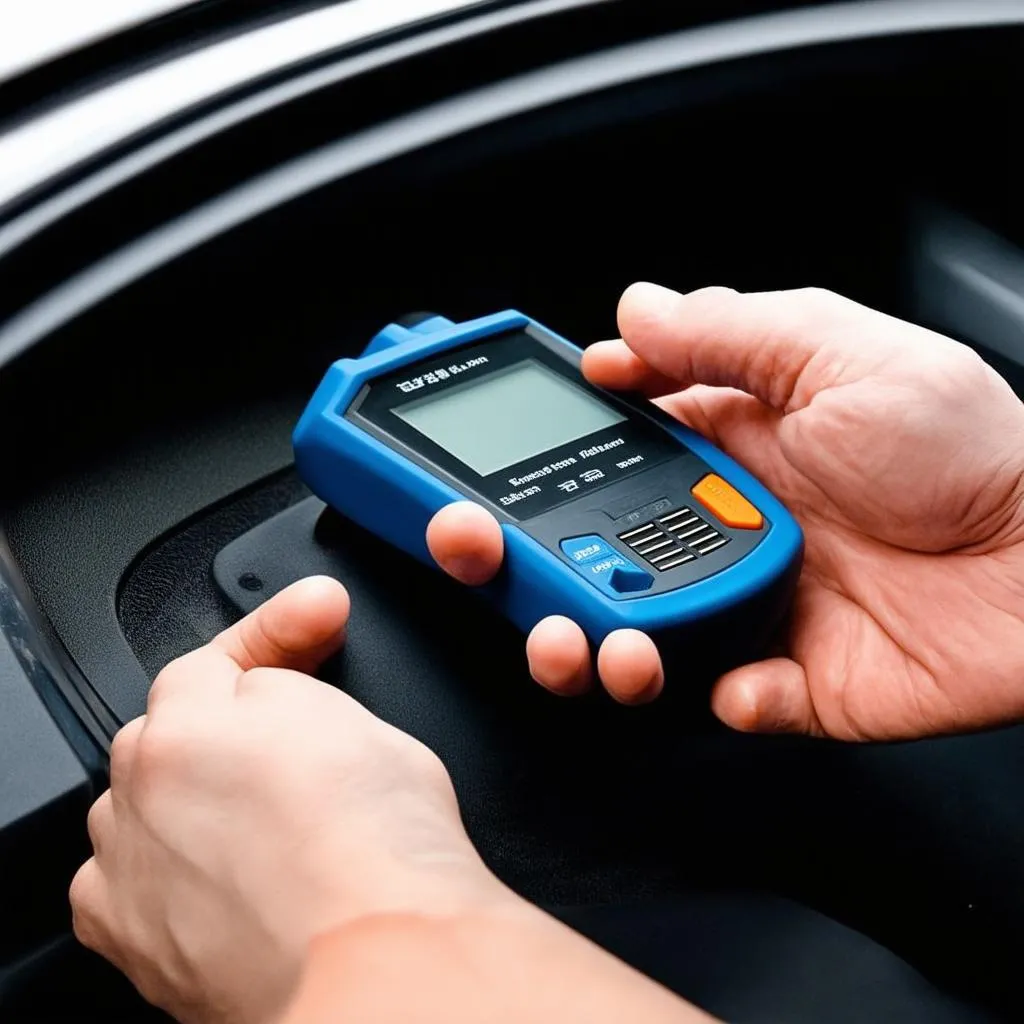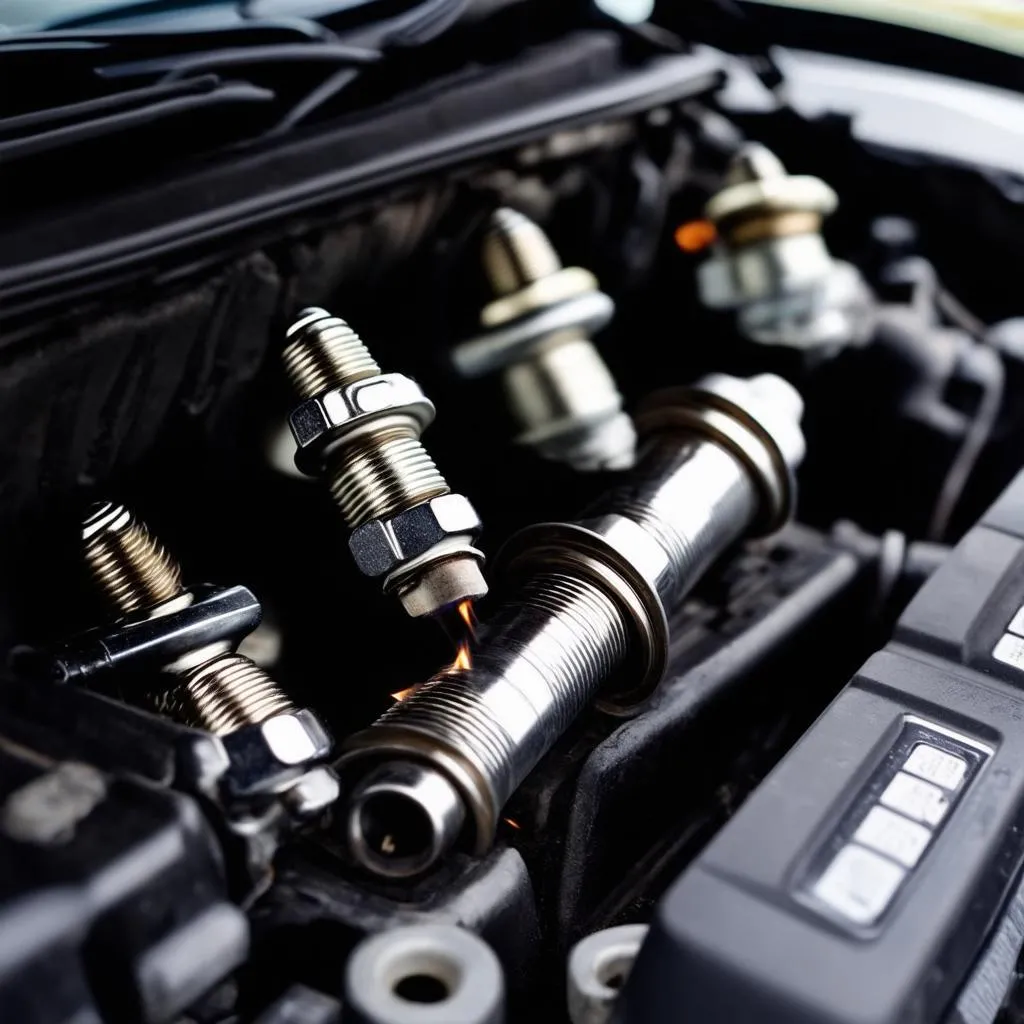Have you ever heard a strange knocking sound coming from your engine? Or felt a sudden loss of power while driving? These could be signs of an engine misfire, a common issue that can be diagnosed and potentially fixed using the OBD II system.
Understanding Engine Misfire Detection with OBD II
Engine misfires occur when a cylinder doesn’t ignite properly, leading to a loss of power and efficiency. This can be caused by various factors, including faulty spark plugs, bad fuel injectors, or issues with the ignition system.
The OBD II system, short for On-Board Diagnostics II, is a computer system that monitors various aspects of your vehicle’s performance. It can detect engine misfires and store diagnostic trouble codes (DTCs) in its memory, which can then be retrieved using a scan tool.
The Importance of Engine Misfire Detection
Misfires can not only impact your vehicle’s performance but also contribute to increased fuel consumption, harmful emissions, and even engine damage in severe cases. That’s why it’s crucial to address any misfire problems promptly.
“The OBD II system is a game-changer for diagnosing and fixing engine misfires,” says Dr. Mark Johnson, an automotive engineering expert. “It allows mechanics to pinpoint the problem quickly and efficiently, saving both time and money for car owners.”
Common Misfire Symptoms and OBD II Codes
Here are some common symptoms of engine misfires:
- Rough idle: The engine may shake or vibrate excessively, especially at low speeds.
- Loss of power: You may notice a decrease in acceleration or a sluggish response when you press the gas pedal.
- Engine knocking or rattling: A distinct knocking or rattling sound can be heard coming from the engine, especially under acceleration.
- Check Engine Light (CEL): This warning light will typically illuminate if the OBD II system detects a misfire.
The OBD II system uses specific codes to identify different types of misfires. Some of the most common misfire codes include:
- P0300: Random/Multiple Cylinder Misfire Detected
- P0301: Cylinder 1 Misfire Detected
- P0302: Cylinder 2 Misfire Detected
- P0303: Cylinder 3 Misfire Detected
- P0304: Cylinder 4 Misfire Detected
- P0305: Cylinder 5 Misfire Detected
- P0306: Cylinder 6 Misfire Detected
How to Detect Misfires Using OBD II
To detect engine misfires using the OBD II system, you’ll need an OBD II scan tool. This is a device that plugs into the OBD II port, located typically under the dashboard or near the steering wheel.
Once the scan tool is connected, it can read the stored codes and provide information about the misfire, including the affected cylinder(s) and the severity of the problem.
What to Do When Your OBD II Detects a Misfire
If your OBD II scan tool detects a misfire, it’s important to take action promptly. Here are the recommended steps:
- Inspect the Spark Plugs: Begin by checking the spark plugs for signs of wear, fouling, or damage. If necessary, replace them with new ones.
- Check the Fuel Injectors: Inspect the fuel injectors for clogs or leaks. You may need to clean or replace them if necessary.
- Examine the Ignition System: Check the ignition coils, wires, and distributor cap for signs of wear or damage. Replace any faulty components.
- Inspect the Engine Sensors: Ensure all engine sensors, including the oxygen sensor and the mass airflow sensor, are functioning properly.
- Test the Fuel Pressure: Verify that the fuel pressure is within the specified range.
- Consult a Mechanic: If you’re unable to identify the cause of the misfire after performing the above steps, it’s best to consult a qualified mechanic for professional diagnosis and repair.
Finding the Root Cause: A Mystical Approach
Some believe that the root cause of engine misfires might be related to the spiritual energy surrounding the vehicle. Master Yifan Zhang, a renowned Feng Shui expert, emphasizes the importance of maintaining a harmonious energy flow within the car. He suggests placing crystals known for their purifying and cleansing properties, such as amethyst or clear quartz, inside the car to promote positive energy and prevent negative energy buildup.
FAQ (Frequently Asked Questions)
Q: What does it mean when my check engine light blinks?
A: A blinking check engine light usually indicates a severe misfire that could potentially damage your engine. It’s crucial to take your car to a mechanic immediately.
Q: Can I drive my car with a misfire?
A: While driving with a misfire is possible, it’s not recommended for extended periods. A misfire can lead to reduced fuel economy, increased emissions, and potential engine damage.
Q: How often should I have my OBD II system scanned?
A: It’s generally recommended to have your OBD II system scanned at least once a year or whenever the check engine light illuminates.
Additional Resources
- OBD II Port Location: https://techcarusa.com/1999-cadillac-deville-obd-port-location/
- Understanding OBD II: https://techcarusa.com/https-en-wikipedia-org-wiki-on-board_diagnostics-obd-ii/
- OBD II Scan Tools: https://techcarusa.com/cen-tech-obd-ii-eobdabs-price/
- Computer-Based OBD Scanners: https://techcarusa.com/computer-based-obd-scanner/
- Common OBD II Codes: https://techcarusa.com/2008-dodge-avenger-obd-codes/
Conclusion
Engine misfires can be frustrating and potentially expensive. But with the help of the OBD II system and a little knowledge, you can diagnose and potentially resolve these issues before they become major problems. Remember, regular maintenance, including a yearly OBD II scan, can help prevent these problems from occurring in the first place.
If you are experiencing engine misfire issues and need help diagnosing or fixing them, don’t hesitate to contact us. We have a team of expert mechanics who are available 24/7 to assist you.
Contact us via Whatsapp: +84767531508
 OBD II Scan Tool
OBD II Scan Tool
 Spark Plugs
Spark Plugs
 Engine Misfire
Engine Misfire